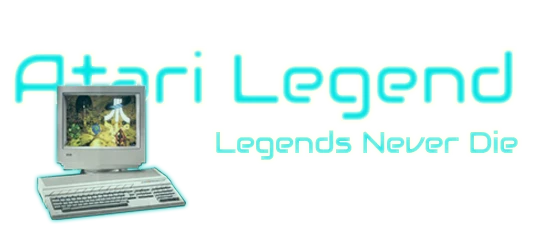

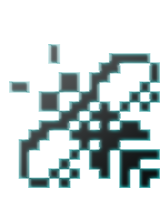





Success stories on the Atari ST are rare. But 18 year old bedroom coder Ian Scott managed to do it. In 1992 he released his STOS graphic adventure Grandad and the Quest for the Holey Vest and it turned into an absolute cult classic. This is his story ... and so much more.
There is currently no profile available in our database
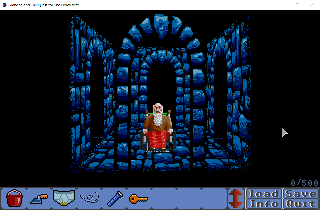
If you wanted to reach the underground labyrinth in the game, Ian was asking for £5. You would receive an access code you could use in the game. This is a screenshot of the 2023 remake of Grandad by Brocantigames.
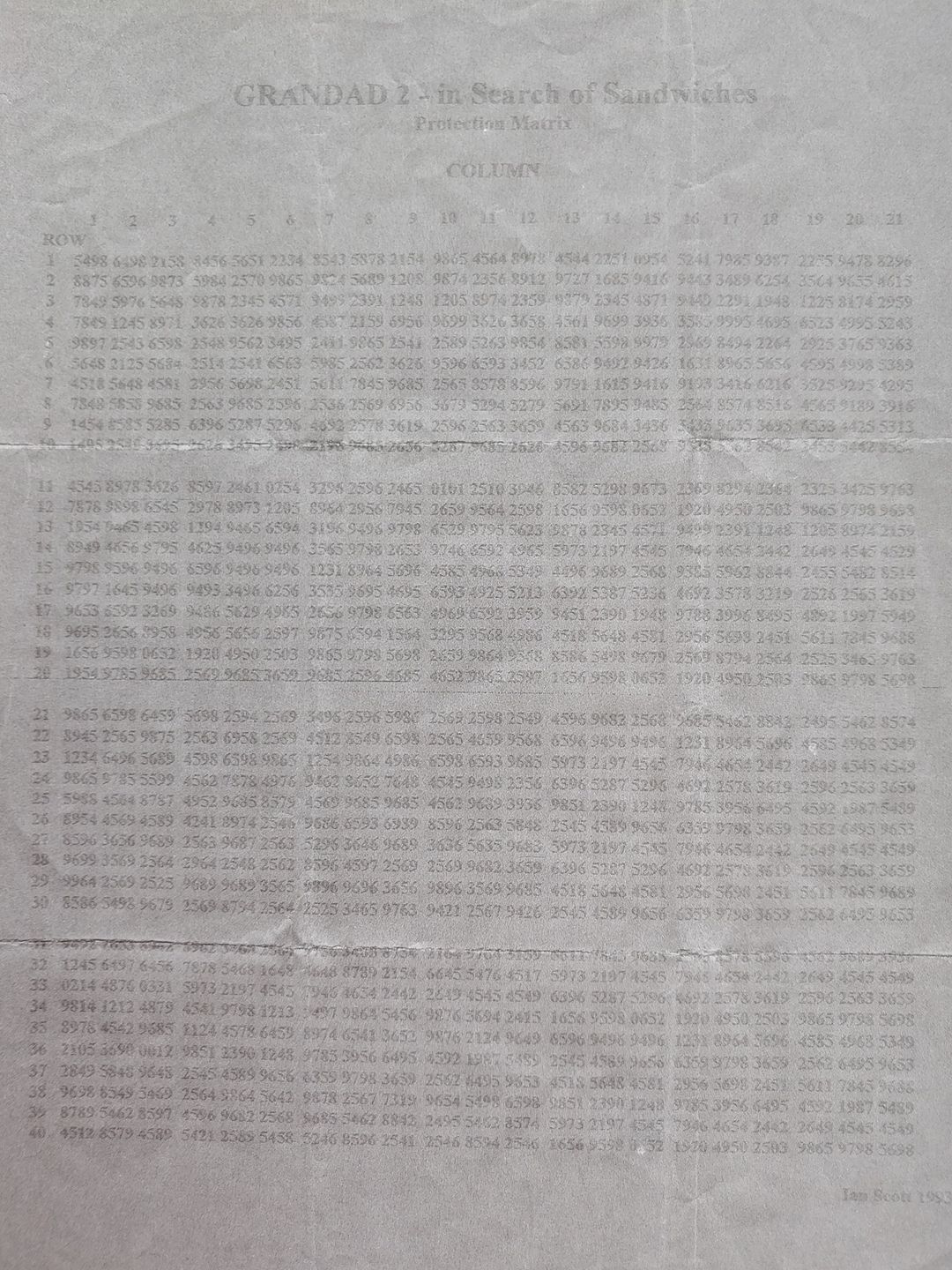
This is a copy of the code sheet for the second game. The original had a red background with black text to make photocopying harder.
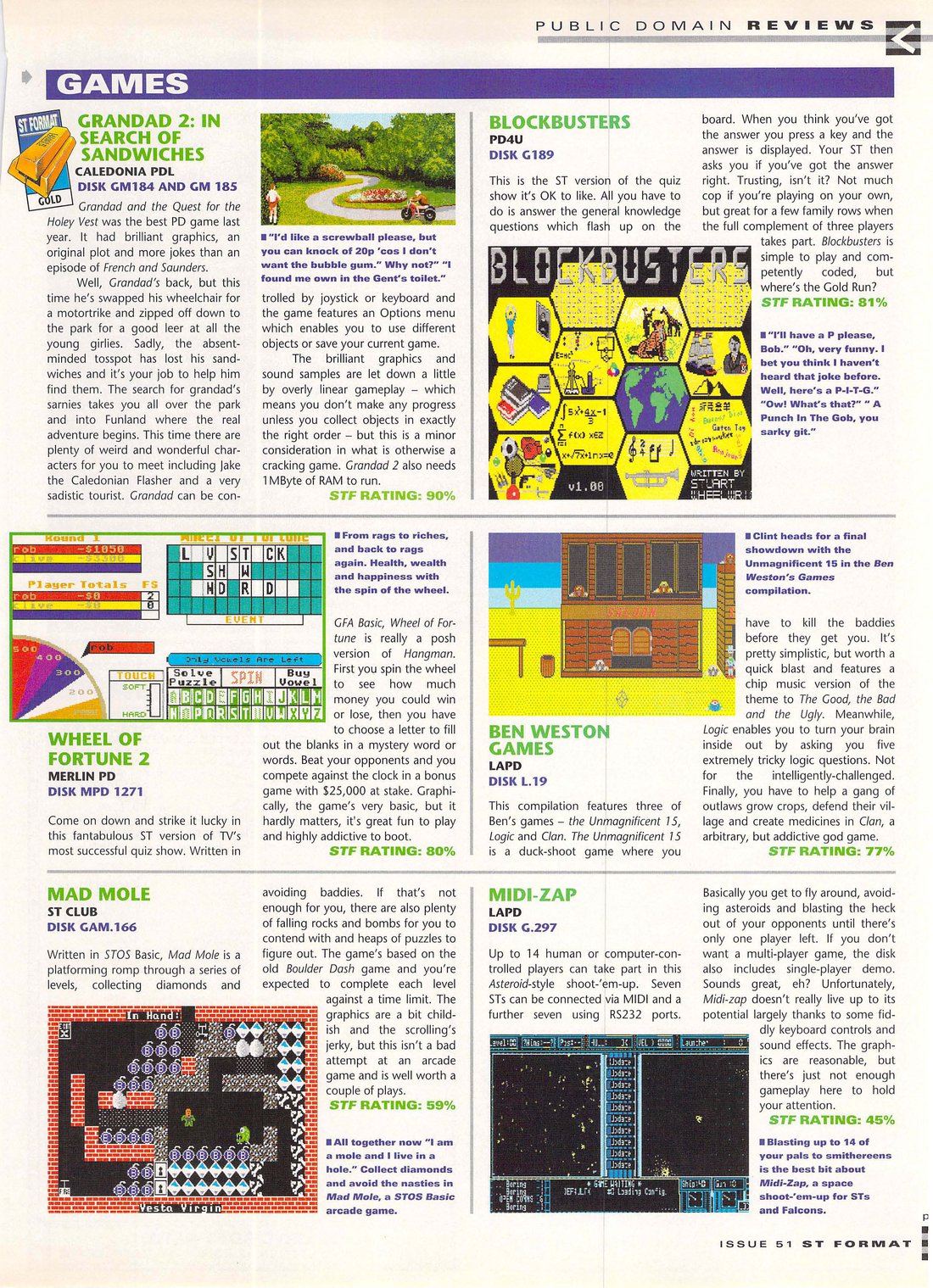
Ian had a lot of help promoting his games from Jake Bain, head of Caledonia PDL. As a thank you, Jake made a cameo in Grandad 2 as a flasher in the park :-)
1) Hello Ian, can you introduce yourself to the Atari fans who haven’t heard from you before?
Hello, my name is Ian Scott and I had my 15 minutes of fame back in the early 90s writing a few games for the Atari ST.
2) When did you first get in touch with computers and where? And which machine was it?
I was taught to program in BASIC at school on a machine that had no screen (Just paper that printed out after every command). My first home computer was a Sinclair ZX80 which had to be assembled with a soldering iron and had 1Kb of memory. It also wasn’t capable of displaying stuff AND working stuff out at the same time, so the screen would go blank every time you pressed a key. But, to me, it was amazing.
3) Did you immediately had a fascination for creating games? Did you already program anything prior to the Atari ST?
I liked the idea of getting a machine to do things. All the kids were given little projects to do like programming the computer to play Noughts & Crosses, simple Golf games etc.
4) When did the Atari ST come into the picture and why this machine?
I upgraded my home computer with the times. First a ZX80, then a ZX81 (the screen didn’t go off), then a Sinclair Spectrum (it was in colour and had graphics), then an Atari ST (it had a proper keyboard).
5) Was Grandad and the Quest for the Holey Vest your first game on the ST?
It was my first published game. I had been making games for my family to play for a while. I made a hangman game called "Pirateman" where the pirate would eventually fall off the plank if you couldn’t guess the word. I did a version of the TV show Countdown for my Dad for us to play in the evenings. I wrote a thing called "MAMEQ" (Make a Million Extremely Quickly) which was a football pools predictor that I used to become a millionaire. Well, I thought I might at the time, and I was convinced that my formulas were accurate enough…but, no, it never happened. I didn’t win.
6) What do you remember about the history of the game? Where did you get the idea from? Why a game with a grumpy old man? What can you tell us about the story?
As far as I can remember, the story was made up as I went along. The memory limitations on the ST when writing in STOS meant that there was only have enough room to have an image on screen, an image in memory (waiting to be the next frame) and a few sprites to animate. There was simply not enough memory to animate the main character (have him walking) so I thought about a solution. I realised that I could get away with not animating the character if he was in a wheelchair. Then I thought about who I could put in a wheelchair without upsetting anyone…who better than a grumpy old man. I figured that old men wouldn’t be playing with an Atari ST so wouldn’t complain.
7) The game contains some typically great British humour (if my dirty mind doesn’t trick me, I remember Grandad getting a heart attack caused by the lady neighbour) and some cool pop culture references. Why did you decide to make a humorous graphics adventure game? (Some people refer to it as Monkey Island, but with crude British humor)
I was playing a few Sierra adventure games and I found the interface to be pretty horrible. Having to type commands over and over. Typing "Pick up the cheese" and getting "I can’t see any cheese". Typing "Pick up the cheese from the plate" and getting "I can’t see any cheese from the plate". Typing "Pick up the cheese on the table" and getting "I can’t see any cheese on the table". Typing "Pick up the fucking cheese” and getting "I can’t see any fucking cheese". Then realising that I had to type "Pick up the smelly cheese". I’m sure games like this were supposed to be fun.
8) Why did you use STOS?
Looking through the mags of the day, STOS seemed to fit the bill. It was BASIC with a few routines in Machine Code to help graphics zip along.
9) How did you create the beautiful graphics of the game? What program did you use?
It was Art Director. It let me draw the walls of the house and then skew and slant them to give a pseudo 3D effect.
10) There was quite a bit of "erotica" in the game. The top floor of the house was filled with paintings of naked ladies. Any comments?
You have to remember that there was no internet at the time. The only way that I could get hold of digital photos was to steal them from computer magazines. (It was possible to order from some companies that supplied floppies with pics on them but they wanted money.) I came across one magazine for the ST in the newsagents that had scantily clad ladies so I used them. Had I seen a magazine with images of hamsters that day, then Grandad's house would have had pictures of hamsters all over his upstairs walls.
11) What do you consider the best technical achievement in the game? Do you remember any of the difficulties in creating it?
STOS was OK at what it did, but it was slow to assemble all the graphical elements and display them quickly. I came across a small routine written in machine code in a computer mag that could change the physical address of memory. I used this routine to point to my background screen and make it become the screen memory. (What you actually see on screen). I would then go about building the next frame in the background (Putting in all the graphic elements like birds, character movements and the position of Grandad himself) - then using the routine to make this display instantly. It made the game seem very smooth compared to other STOS games out there at the time.
12) Are you aware that Grandad is considered one of the BEST STOS game ever on the ST? And how does it make you feel?
That’s nice to hear. I can’t quite believe that, after all this time, people are still talking about it, and still playing it. (It looks and sounds a bit shit these days).
13) When thinking of graphic adventure games, Sierra got criticised for having these unexpected deaths in the game, which made you start all over again. Or you could get stuck if you did not do things in a particular order. This was solved by other companies, like LucasArts and others. Yet in Grandad, you did add some frustratingly difficult parts. The catacombs were nearly impossible without drawing a map. The game turned into some kind of Dungeon Master game. If you did not get the light first, the screen would go dark. If you did not get the spare battery, your wheelchair would run out of juice. Do you remember what you were thinking when creating these parts in the game? I’m sure you made a lot of gamers scream in agony? (ST Format issue 48 has a great solution with map)
Yeah, sorry about that. I realised after Grandad 1 that I was asking a lot of people to keep restoring the game from a floppy after a death. I resolved that one with Grandad 2.
I didn’t want Grandad to be too easy. I wanted the people who paid their fiver to feel that they hadn’t been ripped off and I wanted to give them something substantial to keep them going. Gauging the difficulty level was probably the hardest thing I tried to do and I will hold my hand up and say that I didn’t get that bit quite right.
14) Grandad was shareware. In the middle of the game, there was a keypad which needed a code to open a gate and continue the game. Pretty cool actually. Was Grandad a commercial success? (I guess so because there was a sequel)
Thanks to a glowing review in ST Format, I would come home from work every day and there would be a pile of letters waiting for me with £5 cheques in them. It was a big success so I started writing The Glass Buttock of Tharg.
15) The sequel had a similar copy protection, but this time there was more than a code. People got a piece of paper, a manual, with black text on red background, to prevent photocopying. Why this measure? Was the first game hacked a lot?
I don’t know if the game was hacked but it didn’t really need to be. You could just give your mate a copy of the game and tell him the code at the same time. 473728 – it was the same number for everyone. The red paper for the 2nd game was just a way to make it less easy to play the second part without paying. I got the idea from a commercial game that I don’t remember the name of.
16) The first Grandad game received 90% in ST FORMAT Issue 39 and an STF GOLD award and 5 stars in ST Review issue 7. How did you feel when you saw that and how was your relationship with the magazines? Did you ever get in contact with any them? (Grandad 2 also got 90% in ST FORMAT issue 51)
My Mum & Dad were very proud. They finally found out what I was doing in my bedroom all that time with the door shut. They were probably very relieved as well.
I never had contact with the magazines. There was a guy in Scotland called Jake Bain who owned Caledonia PDL, he was the one that gave copies of my games to them. I was impressed with his help so I told him that I would put him in Grandad 2 as a thank you.
17) Why did you call your company Grandadsoft? Obviously referring to your first game …
The big man in shareware at the time was Jeff Minter aka Llamasoft. He had lots of Llamas in his games. I had a Grandad…
18) At what age did you create Grandad?
18
19) A year after the first Grandad you released the sequel. Immediately we notice the larger scope, 2 floppy disks, much bigger game, better graphics, animated characters and great digital music and sound effects! What do you remember of the creation of this game and its challenges?
The second game used much of the same code as the first one, so most of the nitty gritty work was already done. I spent more time on the graphics, sounds and overall polish. But, I will come clean, even though it got good reviews (and, I think, it’s a much better game) it just didn’t take off like the first one did.
20) With your 3rd and last game (editor : It was actually his second game), The Glass Buttock of Tharg, you created a beautiful RPG. I never played it in the past and there is so little info to be found, but it really looks and feels like a professional game. Please tell us all about this one. Was this also created using STOS?
I liked playing a game called Lords of Midnight by Mike Singleton, so I thought that I would do a version of it myself. It was written in STOS and got good reviews but it’s the sort of game that you either love or hate. It could have been a much bigger, better game than it actually is. However, I released it as it was and then watched it crash and burn.
21) Did you draw all the famous people featured in the game yourself?
Yes I did. There were no home scanners back then.
22) Did you ever consider making a commercial game (non-PD)? And why did you go with PD? Was it because of STOS?
I was headhunted by a commercial company but when I went to see them, I realised that the games developers’ lifestyle isn’t a glamourous one. It wasn’t for me and I had already moved on with my normal career.
I chose PD because of Jeff Minter who seemed to be making a fortune with his games.
23) Are you a gamer? And if so, what is your favorite retro and/or new game?
I don’t have console or gaming PC but when Stadia was announced I was all in. Pity its closing but Red Dead Redemption 2 is a masterpiece. I will miss my cowboy.
24) What keeps you busy these days?
Work, work, work.
25) Just for fun. If you could have a drink with anyone, alive or dead, who would it be and what would you ask? Who do you look up to?
I would like to have a drink with Putin and ask him why he’s such a cunt.
Thanks Ian. Find out more about Ian and his games in our complete documentary.
August 5, 2025 by grams88
Martin Brownlow is a living legend. Best known among ST fans for creating the beloved PD/shareware classics Grav and Grav 2, his games are still cherished by many to this day. From a young age, Martin knew he wanted to make games for a living...and he made that dream a reality. In fact, he’s still doing it today. Discover the full story and much more in this exciting new interview.
October 4, 2024 by grams88
Stacey Jamieson began his career at DMA Design, working on titles such as Oh No! More Lemmings, Walker, GTA and others. Over the years, he moved on to Electronic Arts (EA), where he contributed to major games like the Star Wars Battlefront series, Mass Effect, and Need for Speed. Today, he is the co-founder of Expression Games, where he continues to pursue his passion for game development. What an exciting career!
July 29, 2024 by grams88
Who doesn't love a good underdog story? Chris Sharp is a noteworthy apprentice of the renowned François Lionet, as he mastered the art of coding with the almighty STOS Basic. Chris crafted a few games for our cherished ST, including fan favourites like Magic Tomb and the Freaked Out series. Intrigued? Dive into our interview to revisit the era when game development could still be a solo endeavour.
July 16, 2024 by grams88
When Sega released its Master System, it came bundled with the game Alex Kid. To this day the game remains very popular, loved by many. One of those people is Terry Lloyd. More so, Alex Kid was the main inspiration for the Atari ST platform classic Axel's Magic Hammer. But that is just one of his many accomplishments. Terry has been around the block. Working as an artist and game designer at the beginning of the 80's for Gremlin Graphics, he then moved on to Core Design, which he helped get off the ground. During the 90's he contributed to founding the company Malibu Interactive. On the Atari ST, Terry's resumé include Dynamite Dux, Car-Vup, Rick Dangerous 1 & 2, Torvak the Warrior, WarZone and many more. Read all about this veteran of the games industry in this exciting interview.
April 18, 2024 by grams88
It doesn't always have to be about computers, coding and graphics. Adrian Powell, the artist behind the original Lemmings game, crafted all its artwork, including box art and promotional materials. His passion for painting lemmings has persisted over time and he is still painting lemmings to this day. Powell's work remains influential and has helped selling millions of copies of this classic (ST) game.
Currently 0 registered users online
In the past 24h there were 3 registered users online